On Saturday, mass protests against Donald Trump’s administration took place across all fifty U.S. states. Demonstrators rallied around the message that the country is sliding toward authoritarianism and that “there should be no kings in America.”
Millions of people took to the streets, joining the No Kings demonstrations—the second wave of a protest movement that in June had already become one of the largest in U.S. history. In cities and small towns alike, marches featured marching bands, placards, a giant banner bearing the preamble to the Constitution for people to sign, and participants in inflatable costumes—most often frogs, a symbol of resistance that first appeared in Portland, Oregon.
The rallies marked a clear shift from six months ago, when the Democratic Party seemed adrift after a string of election defeats and the loss of control over the White House and both chambers of Congress.
“We’re finally seeing some backbone from the Democrats,” Ezra Levin, co-founder of the Indivisible movement, told the Associated Press. “The worst thing they could do now is give up.”
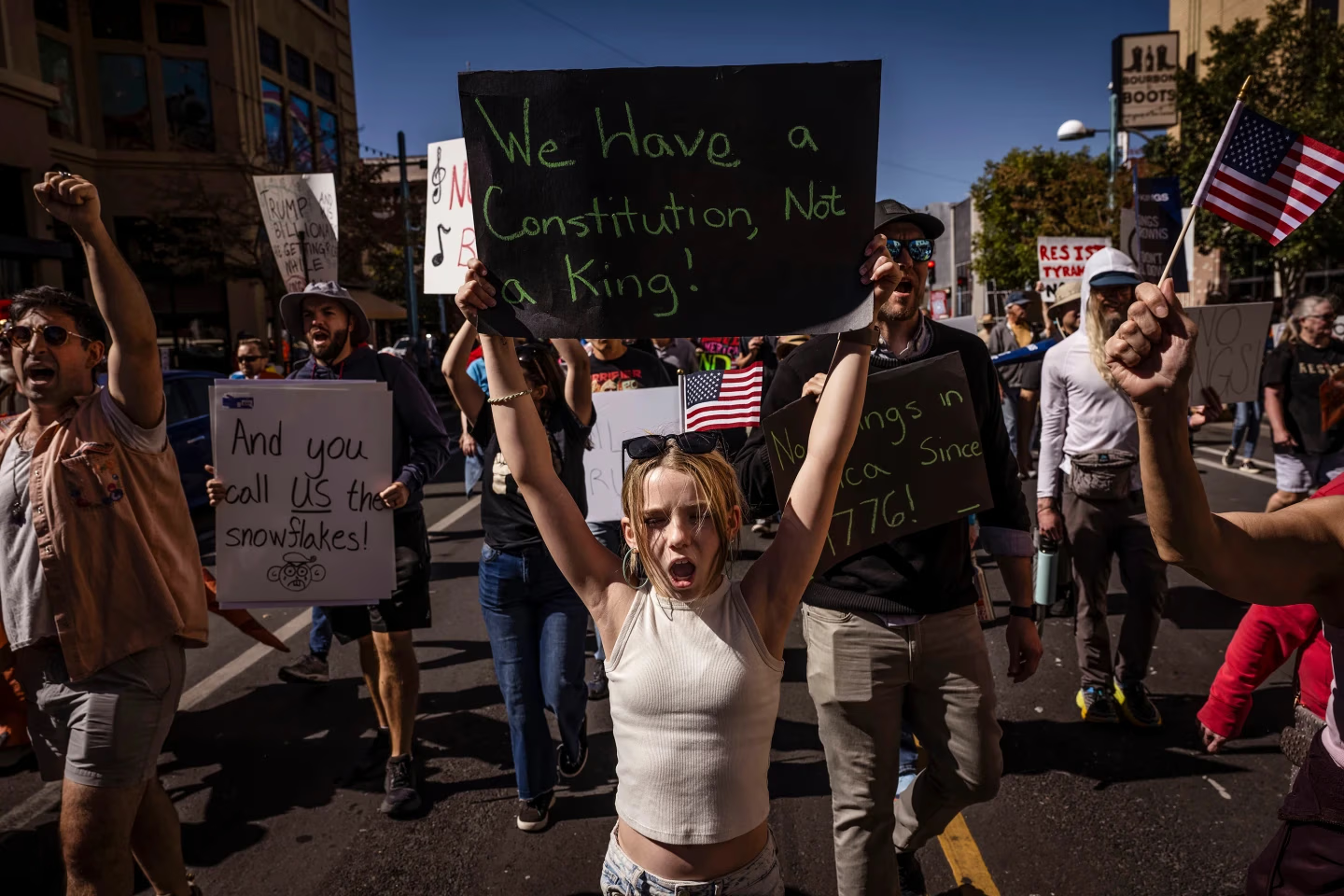
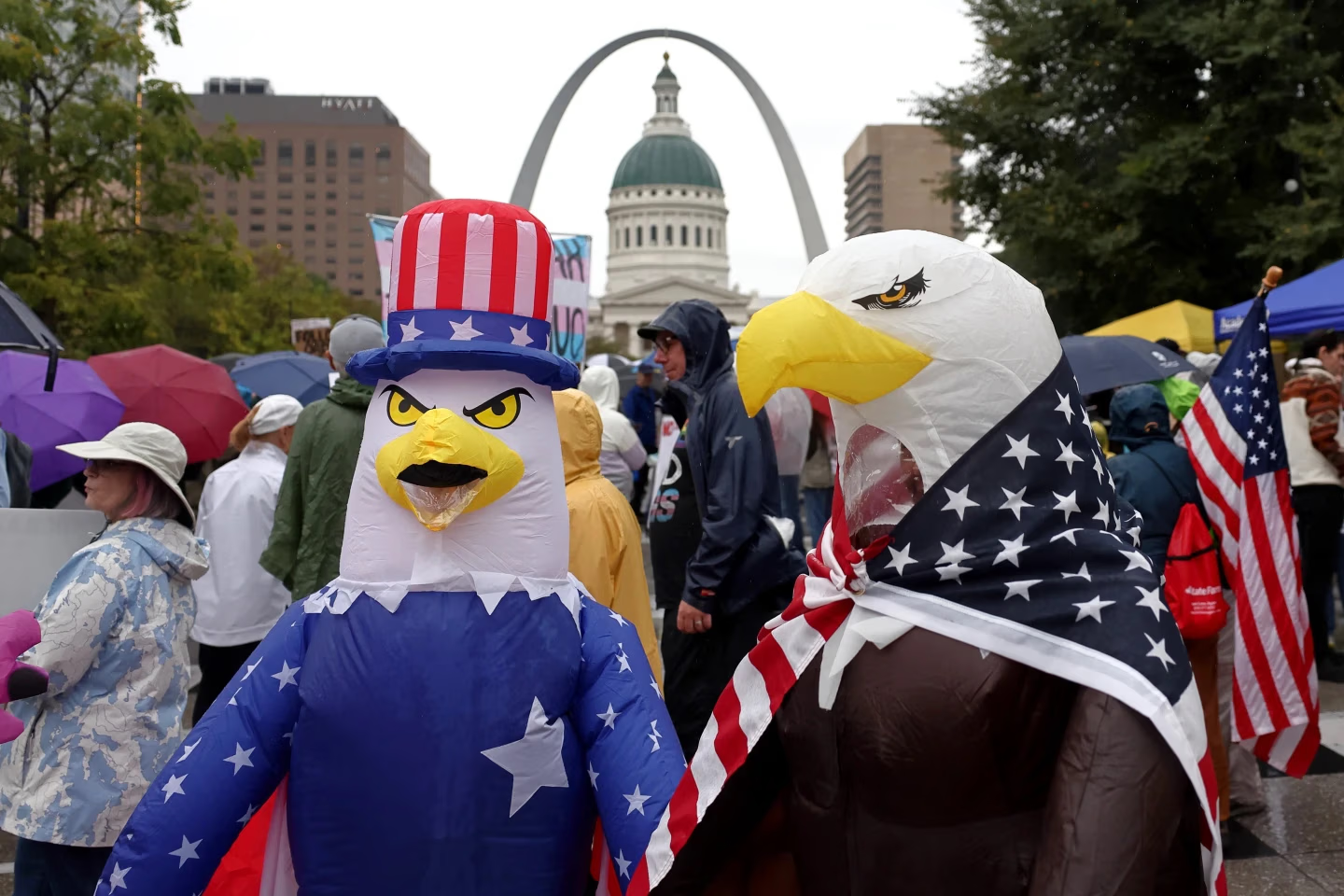
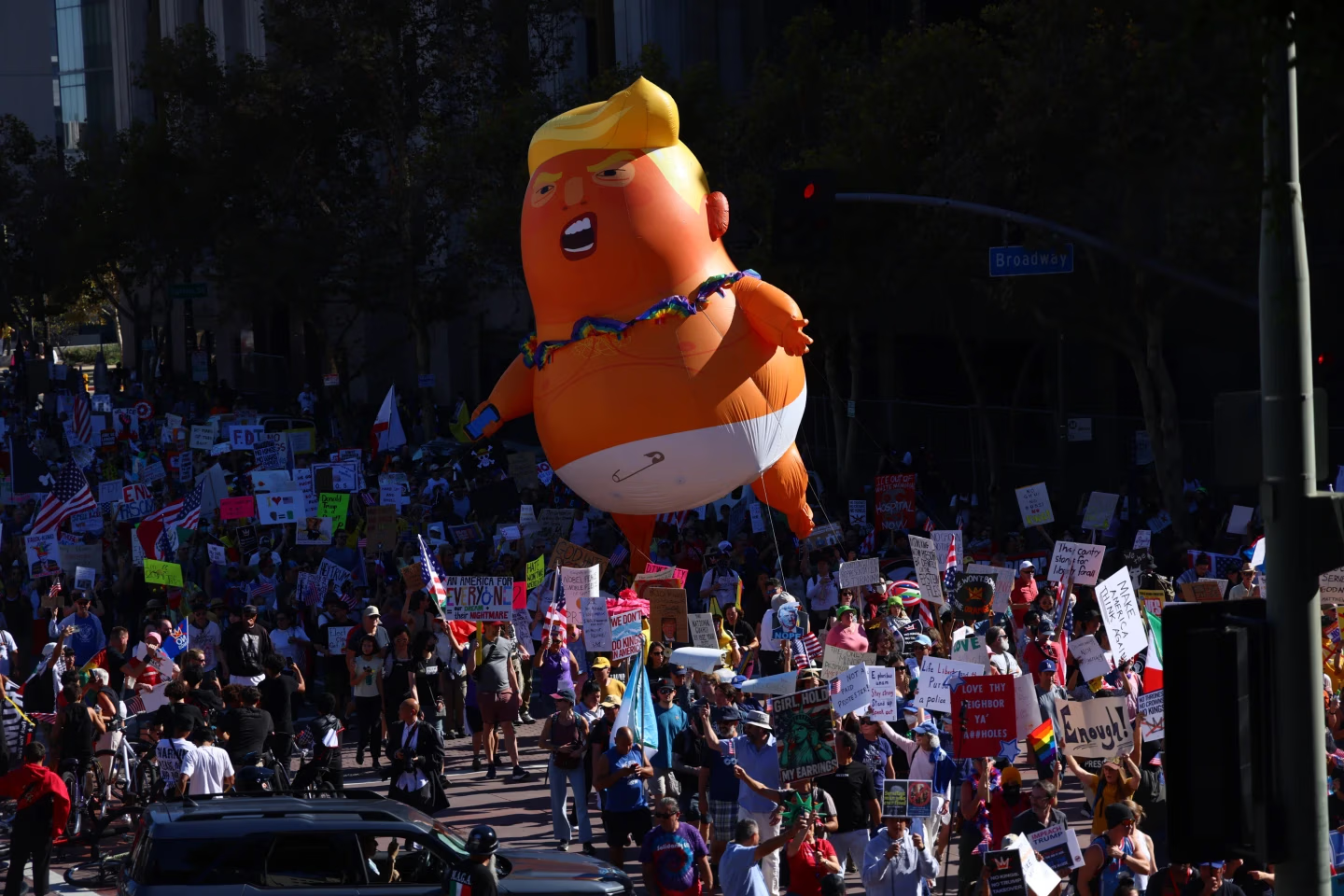
In Chicago’s Grant Park, at Butler Field, at least ten thousand people gathered—many carrying placards denouncing federal immigration policy and mocking the president. Broadcasters warned viewers in advance that they could not vouch for the language appearing on the signs. Later, the Chicago Tribune estimated the crowd at around one hundred thousand.
Some held signs reading “Hands Off Chicago”—a reference to Trump’s statement about deploying the National Guard to the city. Others bore messages like “Resist Fascism,” while some featured language unsuitable for broadcast. When Illinois Congressman Jonathan Jackson took the stage, the crowd chanted “Fuck Donald Trump.”
Chicago Mayor Brandon Johnson said the president’s administration had “decided to stage a Civil War rematch,” reminding the crowd that the Confederates—supporters of white supremacy—were defeated by the Union in the 19th century.
“We are here to say firmly: we do not bow, we do not retreat, and we do not submit,” Johnson declared. “We do not want troops in our city.”
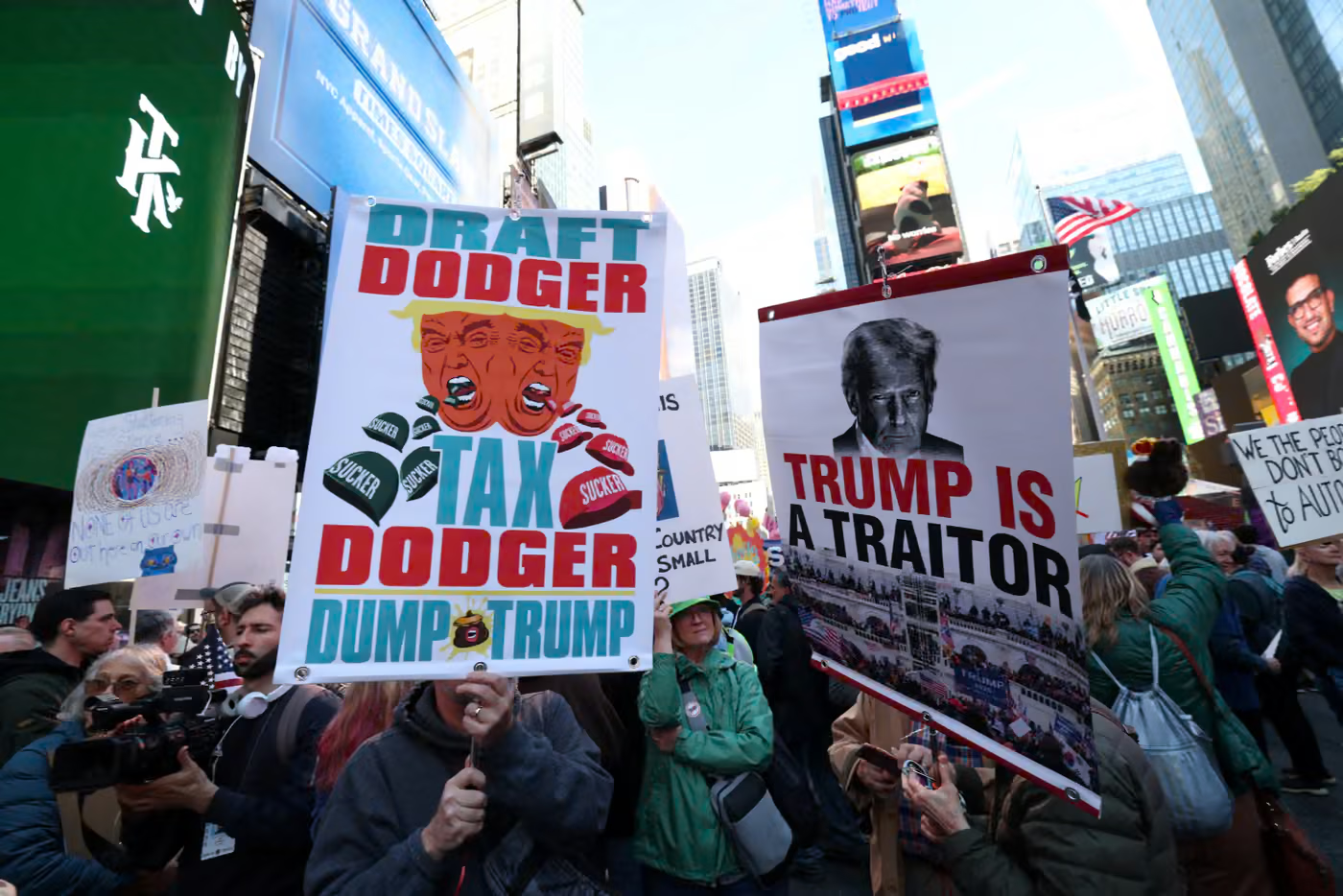
America Says “No Kings.”
Mass Protests Turn Into the Largest Civic Mobilization Since Trump’s Return to the White House

The White House Uses the Shutdown as a Tool to Purge the Bureaucracy
The Trump Administration Fires Thousands of Officials, Citing a Fight Against the “Woke Bureaucracy”

Trump Moves to Crack Down on Political Opponents
The Wall Street Journal Sees the Bolton Case as an Act of the President’s Personal Revenge

The U.S. Is Moving Toward Competitive Authoritarianism
Former Intelligence Officials Warn of a Systemic Erosion of Democracy Under a Second Trump Term
In Los Angeles, 72-year-old Ginny Ashbach was taking part in her forty-second protest since Trump’s inauguration. She attended the No Kings rally dressed as SpongeBob SquarePants—her second choice after failing to find an inflatable frog.
“I wanted it to look funny. That’s how we show that we’re serious, but not dangerous or aggressive,” she explained, noting that Republicans are trying to portray protesters as a threat. “We’re just unhappy,” she added.
Ashbach traveled from Thousand Oaks, near Los Angeles, carrying an American flag. She said she is particularly alarmed by the administration’s pressure on free speech.
“I’m deeply concerned about the erosion of our First Amendment rights,” she said. “They’re attacking universities, the media, law firms—and now our very right to peaceful assembly and freedom of expression.”
In the U.S. capital, more than two hundred thousand people gathered outside the Capitol building. In many cities, protesters wore animal costumes—an idea that originated in Portland during demonstrations against immigration raids and became an ironic response to the White House’s rhetoric about “chaos and lawlessness.”
The main march in downtown Portland remained peaceful: police blocked streets and bridges to allow the procession to pass safely. However, outside the Immigration and Customs Enforcement building in the city’s south, federal agents used tear gas against people who had assembled before the scheduled rally.
Portland Mercury journalist Suzette Smith reported on Bluesky that federal officers threw gas grenades at the protesters.
In Santa Fe, New Mexico, participants turned out dressed as unicorns, chickens, and frogs. “It’s about the absurdity of what’s happening,” said local resident Amy Adler, speaking to the Santa Fe New Mexican while wearing a lobster costume—which she said was “a tribute to Portland.”
On FoxLive, military analyst Lt. Col. Hal Kempfer speculated on whether such costumes could have a protective function. “I don’t rule out that it’s mostly performance, but a suit like that might offer some protection from pepper balls. The downside is that it’s hard to move in and restricts visibility,” he said.
In Atlanta, Georgia, more than ten thousand people gathered outside the city’s Arts Center in the morning, preparing to march toward the State Capitol.
“Recently, I heard the American president tell our generals that we must fight the ‘enemy within,’” said Georgia Senator Raphael Warnock.
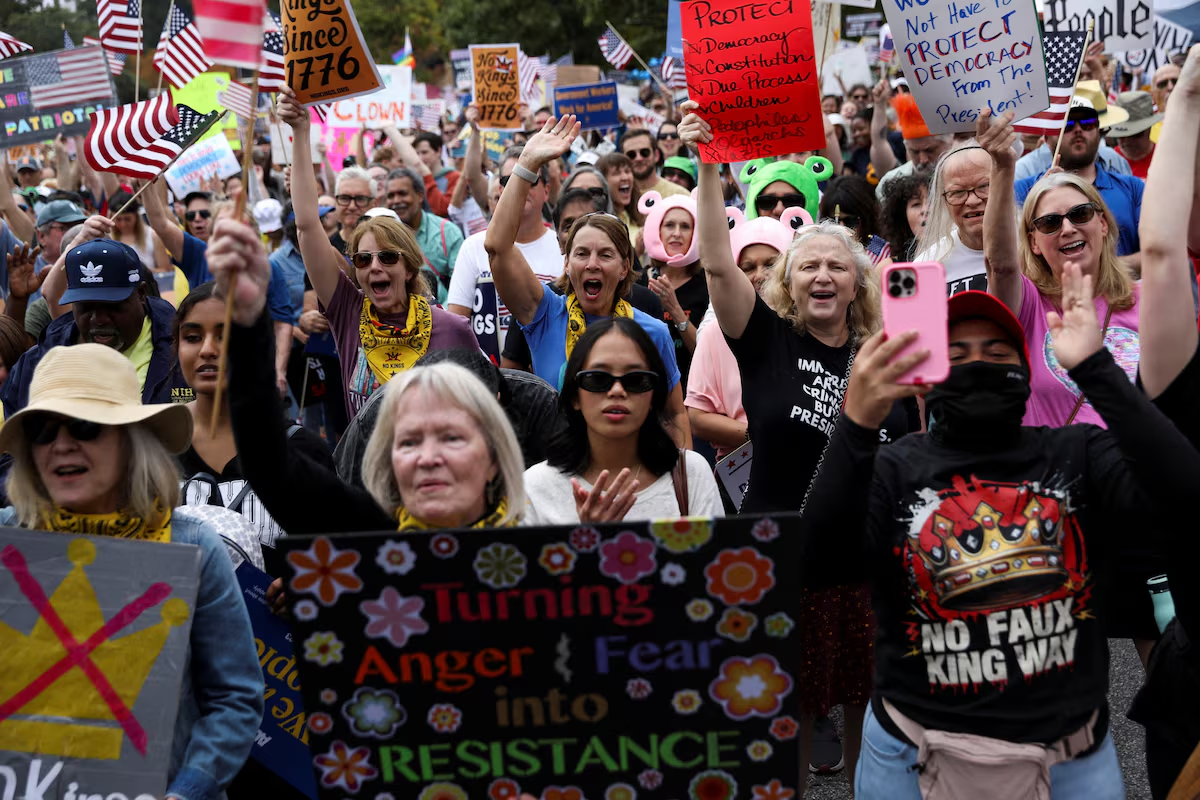
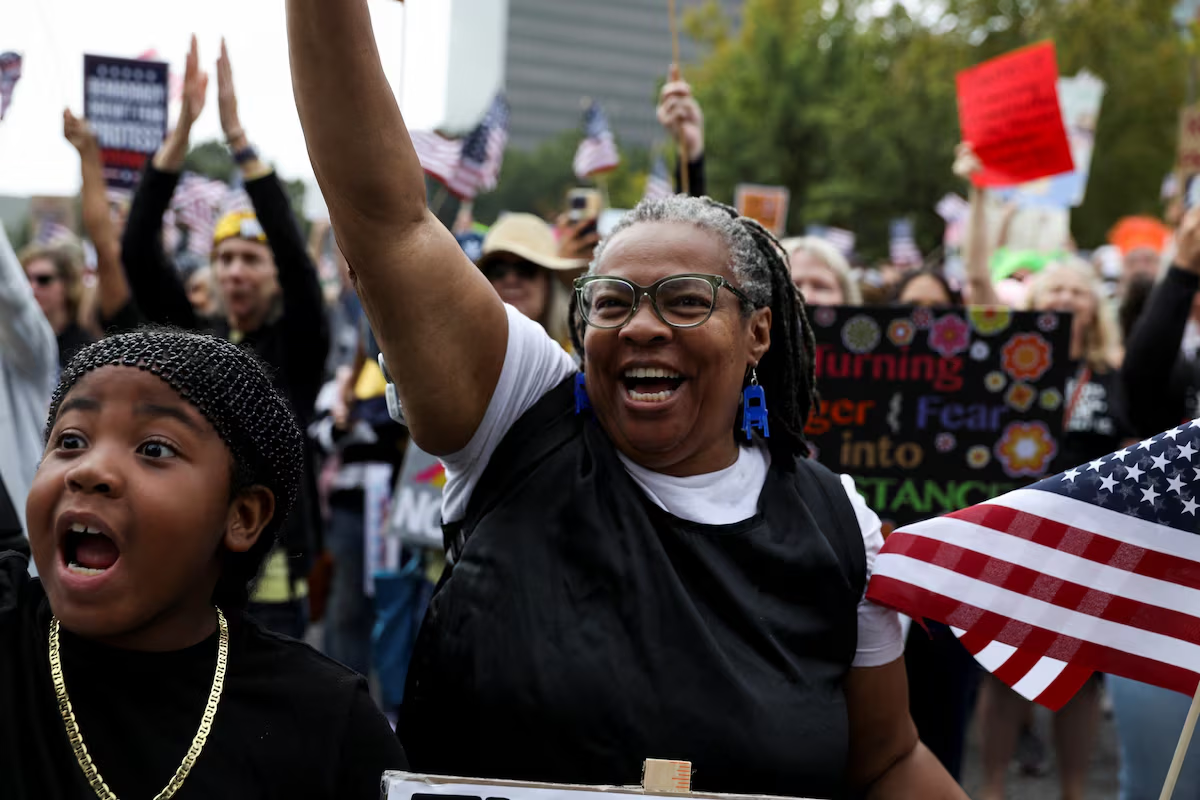
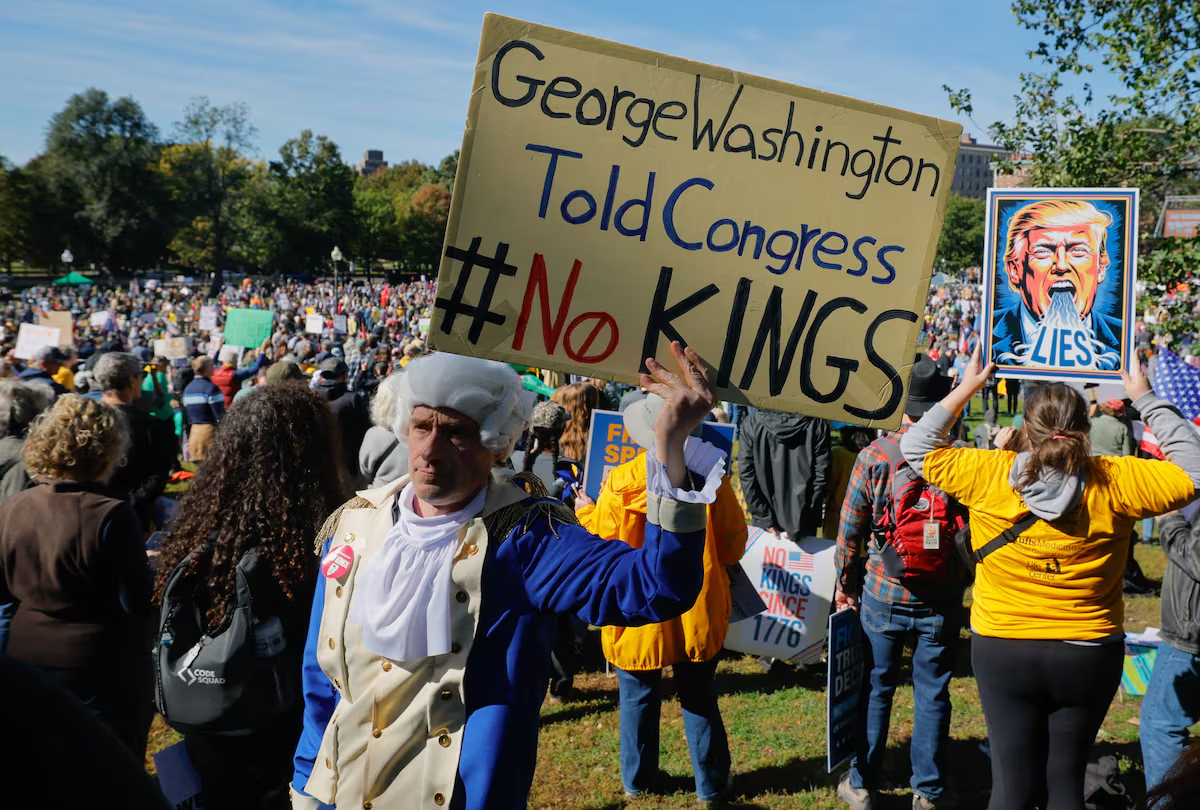
“I don’t care what your political views are. If you’re a U.S. citizen, you should be deeply concerned,” said Raphael Warnock. He warned about the growing presence of federal law enforcement agencies “showing up in communities across the country.”
“What the hell is going on? We should all be alarmed by this,” the senator added.
The Trump administration has intensified pressure on cities, seeking to deploy federal troops and expand the authority of immigration agents. The president aims to criminalize dissent by targeting left-leaning organizations he claims support terrorism or political violence.
Many cities are resisting—filing lawsuits to block the deployment of the National Guard, while residents take to the streets to protest the militarization of their communities.
Trump’s supporters are trying to portray the No Kings movement as unpatriotic and tied to “Antifa,” the decentralized anti-fascist network. They also argue that the protests are prolonging the government shutdown. Texas Governor Greg Abbott announced he would deploy National Guard units to Austin ahead of the demonstrations.
Several prominent politicians took part in the demonstrations, including Democratic Senators Chuck Schumer and Chris Murphy, as well as Independent Senator Bernie Sanders. The No Kings coalition repeatedly emphasized its commitment to nonviolent resistance; tens of thousands of participants received training in safety and de-escalation techniques.
“The key thing people must understand is this: the president wants us to be afraid, but we will not be intimidated or silenced,” said Lisa Gilbert, co-chair of Public Citizen, one of the protest coordinators. “It’s crucial that we keep these demonstrations peaceful, stand for our beliefs with dignity, and refuse to give in to fear.”
More than two hundred organizations joined the October 18 protests. Organizers listed the main cities hosting major rallies: Washington, San Francisco, San Diego, Atlanta, New York, Houston, Honolulu, Boston, Kansas City (Missouri), Bozeman (Montana), Chicago, and New Orleans.
The core message of the movement is simple: there are no kings in the United States—a direct response to Trump’s growing authoritarian tendencies. The president said on Fox News, “They say they call me a king. But I’m not a king.” House Speaker Mike Johnson and other Republicans described the protests as “an America-hating rally.”
In response, Vermont Senator Bernie Sanders said in Washington, “He’s wrong. Millions of Americans are taking to the streets today not because they hate America, but because they love it. We’re here to do everything we can to honor the memory of the millions of men and women who have fought and died over the past 250 years for our democracy and our freedoms.”
Organizers highlight several core themes: Trump is using taxpayer money to expand his personal power by deploying federal forces to seize control of cities; he has openly declared his intent to seek a third term and “already behaves like a monarch.” The administration is accused of defying court rulings, slashing social programs, and carrying out mass deportations without due process.
Left-wing movements are calling for a clear political agenda and specific demands. In an October 15 statement titled “No Kings, No Führers! Mobilize the Working Class Against Trump’s Dictatorship!”, the Socialist Equality Party said the “No Kings” slogan captures the public’s rejection of autocracy but warned: “Outrage and anger alone are not enough to stop a dictatorship.”
The progressive organization Public Citizen said the protests aim to stand up to “the most lawless administration in U.S. history.” “Millions of Americans are uniting in peaceful demonstrations to defend democracy and to show that we will never bow to a king,” the statement read.
The June No Kings protests brought millions of people into the streets. According to the Harvard Crowd Counting Consortium, between two and 4.8 million people participated across more than two thousand locations. Researchers described it as “likely the second-largest single-day demonstration since Trump took office in January 2017,” surpassed only by that year’s Women’s March.
